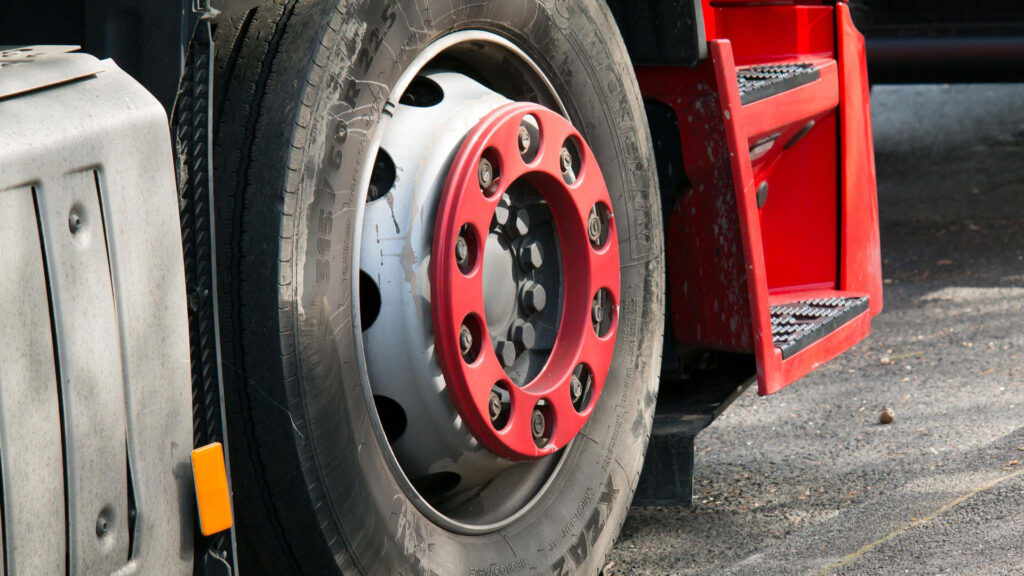Updated rules for 2020/2021
The latest MovinOn blog has confirmed that tyres over 10 years old on HGVs and PSVs will be banned.
The legislation takes effect on 1 February 2021 and applies to any HGV or PSV tested at Authorised Testing Facilities (ATFs), as well as some vehicles in the MOT scheme (vehicles with more than 8 passenger seats that are not used commercially).
Vehicles with tyres over 10 years old on the front axle (or on any single wheel for minibuses with 9-16 passenger seats) will fail their annual test.
This also applies for vehicles that don’t have a legible date code displayed. Each tyre must display the date of manufacture or re-treading.
[originally published Feb 5 2019]:
Following the release of the updated guide to maintaining roadworthiness by the DVSA late last year there has been some debate amongst operators about the guidance surrounding old tyres.
Specifically, the updated guide includes a section on tyres over 10 years old:
“A robust tyre management system is essential for any professional vehicle operator and should ensure… that tyre age is monitored and that tyres aged more than 10 years old should not be used except on a rear axle as part of a twin wheel arrangement. Where tyres more than 10 years old are used, their age should be recorded and a specific risk assessment, that considers the speed and loading conditions that the vehicle will operate under (for example, operating only in urban areas) is done”
Last month Dave Wood, DVSA’s Enforcement Policy Manager, cleared up some of the ensuing confusion on the Moving On blog. In his post, he discussed the rules around using tyres over 10 years old, the reasons for those rules, and what will happen to operators who don’t comply.
What are the rules around using old tyres?
First and foremost, Wood stresses that there is no ban on tyres over a specific age*1. As with the rest of the guidance, the only criteria really is that the vehicle remains safe and roadworthy, and that preventable road traffic accidents are avoided. This puts the onus on operators and drivers to have a robust tyre management system in place*2, to ensure that their vehicles remain roadworthy and compliant.
Essentially, this means that operators using older tyres must take the increased risk associated with older models into account when planning checks and inspections, as well as in planning routes and loads. Wood points to four specific considerations associated with old tyres:
- Speed – vehicles travelling at higher speed will degrade tyres faster than those travelling at lower speeds
- Axle weight – heavy axles (and laden vehicles) will have a higher impact on old tyres than a lighter load
- Journey distance – long (and/or frequent) journeys will have more impact on older tyres that short/infrequent journeys
- Tyre position – Older tyres shouldn’t generally be used on the front axle, but used on the rear axle, as part of a twin wheel fitment, is safer
How about historic vehicles?
The post does also point out that the guidelines need not be a concern for people with old tyres on historic vehicles, used only for shows and events. So long as the tyres are regularly inspected, and the vehicle is only making short, infrequent, low-speed journeys with a very light load, tyres over ten years old in this circumstance are generally acceptable.
Why has the guidance on old tyres been put in place?
Wood points out that:
“Obviously, any tyre failure is a concern for road safety. It could cause a crash, there could be delays because of a broken down vehicle, and shredded tyre remnants could pose a danger to other road users.”
A 2013 coach crash first raised concerns about old tyres and the potential for catastrophic failure, with ongoing research into the issue commissioned by the Department for Transport. The guidance for operators using older tyres has been put in place as a precaution until the results of the DfT’s research into the impact of tyre age and risk are revealed.
What will happen to operators with tyres over 10 years old?
If a vehicle is found to be using tyres over ten years old, Wood has stated that the first port of call would not be to report the operator to the Traffic Commissioner.
Instead, they would remind the operator of the guidance, check that they have a risk assessment for the vehicle (which take the tyre age and usage into account), and ask the operator to show that they are maintaining and inspecting the vehicles properly. He states that only*3:
“If they can’t show us that they’re managing their tyres and reducing risk, we would consider referring them to the Traffic Commissioner.”
Road safety is of the utmost importance.
Besides the risk of being found non-compliant and reported to the Traffic Commissioner for further action, operating unsafe vehicles could put lives at risk.
If the risk of endangering the lives of drivers and other road users isn’t enough, road safety and compliance are essential from a purely business perspective too. The financial impact and potential for negative press for operators involved in major road incidents could also be disastrous.
How to manage older tyres
Ultimately though safety is of the highest concern and the risk depends on how exactly you’re using your older tyres.
Operators should have a Tyre Management Risk Assessment in place. The risk assessment should take into account how the tyres are used and lay out inspection frequency for old tyres.
As an operator, you are responsible for the safe operation of vehicles. Using a system like our Walkaround Checks feature can help you to plan inspection frequencies for individual vehicles based on tyre age, automatically remind you when inspections are due, and store paperwork associated with the inspection to prove compliance with the regulations.
*1As per update: tyres over ten years old are now banned on certain vehicles
*2As per update: It is still essential for operators and drivers to have a robust tyre management system in place and to ensure that their vehicles remain roadworthy and compliant
*3As per update: tyres over ten years old may cause certain vehicles to fail their annual test








